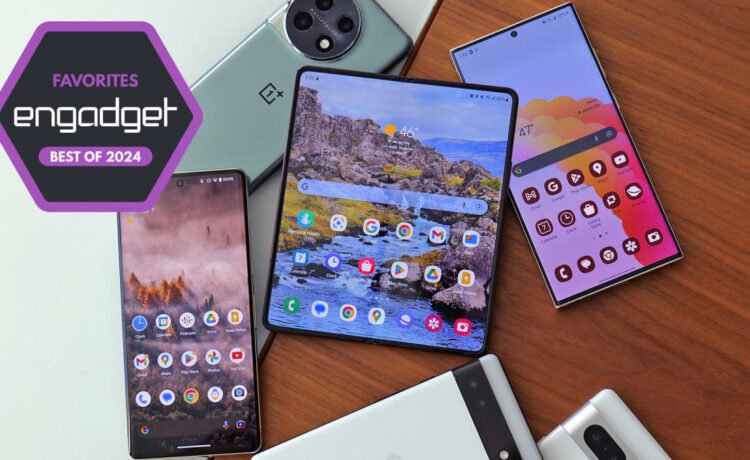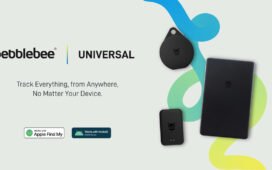There’s one clear perk that Android has over iOS and that’s variety when it comes to the phones you have to choose from. Apple has made the iPhone is the only game in town for iOS, but with Google’s operating system, there are dozens of choices out there from manufacturers like Samsung, Motorola, OnePlus and others. But that also means it can be difficult to decide which device is best for you when it comes time to upgrade, or if you want to switch from iPhone to Android in the new year. If you’re looking for a new phone and don’t know where to start, we’ve got you covered with a selection of the best Android phones for every budget.
What to look for in a new Android phone
Performance
When it comes to picking our favorite Android phones, the main things we look for are pretty straightforward: good performance (both compute and AI), a nice display, solid design, sharp cameras, long battery life and a significant commitment to ongoing software support. For performance, not only do we look at benchmarks and other metrics, but we also evaluate phones based on responsiveness. Regardless of whether you’re reading, text messaging, scrolling through social media or playing a game, no one wants a gadget that feels sluggish.
Display
When it comes to displays, we generally prefer OLED panels that can produce rich, saturated colors with at least 600 nits of brightness, though many of our top mid-range and high-end phones can hit 1,000 nits or more. And more recently, most of our favorite devices also support screens with fast refresh rates of 90Hz or 120Hz, which adds an extra level of smoothness and fluidity.
Design
Now we will admit there is a bit of subjectivity when deciding which phones look the best, but there are other design aspects like dust and water resistance or screen durability that can make a big difference to long-term survival. It’s also important to consider things like support for wireless charging, power sharing (aka reverse wireless charging) and UWB connectivity, which can have an impact on how your phone interacts with your other devices.
Cameras
Obviously, for photos we’re looking for sharp, colorful shots in both bright and low-light conditions. And we want video clips with high dynamic range, rich audio and smooth image stabilization. Extra cameras for ultra-wide and telephoto lenses are a plus. The best cameras should also include features like dedicated night modes, support for various video recording resolutions, and additional photo modes like timelapse, slow motion and more.
Battery and software
Finally, in terms of longevity, we’re looking for all-day battery life on devices that also delivered great results on our local video rundown test (at least 16 hours on a charge, but more is obviously better). Wireless charging capabilities have become almost ubiquitous over the past few years, and most of our top picks have this extra perk. Fast-charging is available on some Android phones, too. Finally, with people holding onto their phones longer than ever, we like to see companies commit to at least three years of software support, upgrades and regular security updates.
Read our full Google Pixel 8 Pro review
Processor: Google Tensor G3 | Display: 6.7-inch Super Actua, up to 120Hz | Cameras: Rear array (50MP wide, 12MP ultrawide, 48MP telephoto), 10.5MP front camera | Battery: 5,050mAh
Thanks to the Tensor G3 chip, updated sensors and a host of new AI-powered features, the Google Pixel 8 and 8 Pro have even more to offer for both photography and everyday use. The new Magic Editor on Pixel phones makes it astonishingly easy to remove distracting objects from your pics, while the Audio Magic Eraser cuts down on annoying ambient sound in videos. And for all those group photos, Best Take ensures that everyone looks their best, even if they weren’t smiling during the first shot. On top of that, Google’s Call Screen has gotten smarter while Assistant features, like being able to summarize or real articles aloud make it easy to stay on top of news however you want. Add to that a more refined design, brighter displays, better battery life and improved performance, and Google’s latest flagship phones might be the most well-rounded Android phones on the market.
- Super Actua display
- Genuinely useful AI features
- Tensor G3 chip
- Seven years of software support
- New temperature sensor
- Much improved battery life
- Configs now go up to 1TB of storage
- $100 more than last year
- Face Unlock setup can be a little tricky
Read our full Google Pixel 8a review
Processor: Google Tensor G3 | Display: 6.1-inch 1,080 x 2,400 OLED, up to 120Hz | Cameras: Rear array (64MP wide, 13MP ultrawide), 13MP front camera | Battery: 4,49mAh
Google’s A-series Pixels have long been some of the best midrange phones on the market. But now with the addition of a Tensor G3 chip, the Pixel 8a supports the same powerful and versatile AI functions you get on Google’s flagship phones along with excellent cameras, a gorgeous 120Hz OLED display and great battery life. The device also comes with creature comforts like IP67 dust and water resistance and convenient (but slow) 7.5-watt Qi wireless charging. But most importantly, starting at $499, it might be one of the best deals on the market.
- Colorful 120Hz OLED display
- Strong battery life
- Excellent cameras
- Great value
- Slow wireless charging
- Thick bezels
Read our full Samsung Galaxy S24 Ultra review
Processor: Qualcomm Snapdragon 8 Gen 3 | Display: 6.8-inch Dynamic AMOLED QHD+, up to 120Hz | Cameras: Rear array (200MP, Dual Pixel AF, Digital Zoom 100x, 50MP Macro, 12MP UW), 12MP front camera | Battery: 5,000mAh
For its latest super-premium phone, Samsung gave the S24 Ultra a more durable titanium frame, faster performance thanks to a Snapdragon 8 Gen 3 chip and a much longer battery life. The company also tweaked its longest telephoto lens with a 5x optical zoom so it’s more usable in a wider range of situations. But the biggest upgrade is a new full suite of AI tools, which includes the ability to proofread texts, edit images and transcribe recordings. And when you tack on the best display available on a phone today and a built-in stylus, you have a very compelling flagship handset. Unfortunately, starting at $1,300, the S24 Ultra is a bit too expensive to recommend to anyone without deep pockets.
Read our full Samsung Galaxy Z Fold 6 review
Processor: Qualcomm Snapdragon 8 Gen 3 | Display: 7.6-inch QXGA+ full display, 6.3-inch HD+ cover display | Cameras: Rear array (50MP wide, 12MP ultrawide, 10dMP telephoto), 10MP (Cover) + 4MP UDC (Main) front camera | Battery: 4,400mAh
While we would have liked to see some more drastic design changes, Samsung’s Galaxy Z Fold 6 remains one of the most versatile and well-rounded examples of a big, premium foldable phone. Its new Snapdragon 8 Gen 3 chip delivers strong performance and improved energy efficiency while its Enhanced Armor Aluminum chassis is noticeably lighter than before (and a bit more durable too). There’s also a new ultra-wide angle camera sensor and a boatload of AI-powered features scattered throughout the phone. Plus, the Z Fold 6 remains one of the few foldables with native stylus support, though you’ll need to pay extra for one of Samsung’s S Pens. Perhaps the biggest downside is that Samsung’s latest flagship now costs $100 more than its predecessor.
- Super bright and colorful display
- Even lighter chassis
- Great battery life
- Native stylus support
- Even more expensive than before
- Same main camera as the previous two Z Folds
- S Pen not included
- Charging speeds could be faster















